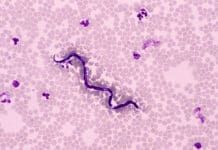Home Search
raw%20dog%20food - search results
If you're not happy with the results, please do another search
So Much to Talk About
that the claims in the article do not and could not apply to Natura Pet Products or any of our outstanding pet foods. Everything that we make is exactly as specified
Effective Healing Herbs for Dogs
Unlike conventional drug therapies and surgical interventions, effective herb use does not focus on suppression or removal of disease symptoms. Instead, the herbalist begins his work from a more holistic perspective, one that starts with identification and correction of underlying issues and external influences that cause or contribute to illness.
Electric Dog Fences: Are They Safe?
One rainy day afternoon that week, upon arriving home, Darren Ashby, an electronic engineer, sent his oldest son out to the pen to take Rufus for a walk. The boy came back in and said Rufus wouldn't let the boy get near him. Dad went out to help, and was horrified by what he found. What I saw made me sick
Herbal Medicines and Nutritive Herbs
Wild dogs, researchers have observed, browse a broad variety of berries, grasses, flower blossoms, seeds, and even a few roots in their continuous search for food. Many of the plants they eat are quite tasty, even to us humans, while others are not palatable at all. In fact, some of the plants wild animals nibble upon may even be regarded by humans as potentially toxic. So why do they consume such plants? Because maybe they are not looking for food. Perhaps they are seeking medicine.
How to Conduct a Home Health Exam for Your Dog
There are numerous health conditions that can develop and present a real danger to your dog in between veterinary examinations – and YOU can detect many of them. It’s best to follow a consistent routine, so your dog becomes comfortable and relaxed with the procedure, and to increase your familiarity with his body, lumps, bumps, and all. Write out and follow a short outline, to remind yourself about each part of the dog’s body you want to check.
TTouch Practitioners Explain Canine “Body Wrapping”
Body wrapping" dogs looks kooky
What You Should Know Before Your Dog Receives Anesthesia
Advances in anesthesiology have made this life-saving medical tool safer than ever. Prior to administering an anesthetic and performing an elective surgical procedure, a veterinarian will examine your dog completely to determine if she is in general good health. Usually, the veterinarian will draw blood before the day of surgery, especially if the patient is an older dog, or one whose health is compromised by injury or illness. The doctor will check the blood count for signs of anemia or a high white blood cell count that may indicate the dog has an infection.
Heartworm Medicine Side Effects: Reader Experiences
Whole Dog Journal readers respond to the WDJ article "Reflections on Heartworm" with their stories of heartworm medicine side effects.
Frozen Dog Treat Review
We found only four commercial products intended as hot-weather treats – though, truthfully, this was a bit of a reach. Only one product is an actual frozen treat, purchased in grocery stores or pet supply stores equipped with freezers (many stores that sell top-quality frozen raw dog foods also sell this treat). Two other products are sold in a form similar to pre-made Jello or pudding cups: edible in that form, but intended to be frozen or refrigerated and eaten cold. The fourth product actually is ice cream – freeze dried and meant to be fed in small, not cold pieces. This product niche could use a few more contestants!
Heartworm Treatment Options
The heartworm (Dirofilaria immitis) is a nematode or roundworm named for its place of residence, inside the heart. To understand the challenge of controlling this parasite, you have to understand its life cycle, a complex and slightly bizarre process. Living in a dogs pulmonary arteries, adult heartworms mate. Each female (which can reach sizes of up to 11 inches) produces thousands of eggs, each less than 1/800th of an inch, which are called microfilariae, and circulate in the blood.
Using Acupressure to Relieve Stiffness
Taking your dog with you on a long car trip this summer? Then she’ll benefit from these easy acupressure techniques, which help prevent joint stiffness and muscle soreness. The ancient healing art of acupressure offers our senior friends a lot of relief from the aches and pains of aging. It is very common for a dog to suffer the same difficulties we do as their years advance.
More On Frozen Foods!
50808






